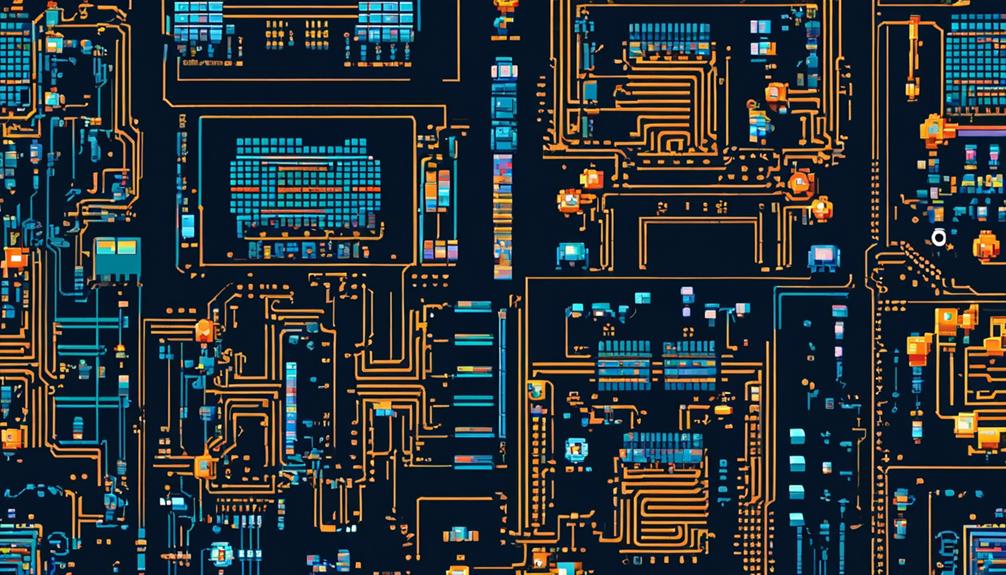In today's fast-paced technological landscape, the need to upgrade edge computing hardware has become increasingly crucial. As organizations strive to keep up with the growing demands of edge deployments, the performance and capabilities of their hardware play a vital role in ensuring efficient and reliable operations.
However, with an array of options available, selecting the right hardware can be a daunting task. In this discussion, we will explore the importance of upgrading edge computing hardware, the current advancements in this field, factors to consider before making a hardware upgrade, best practices to follow, and the benefits that upgrading can bring.
So, let us delve into the world of edge computing hardware and uncover the key considerations that can help organizations unlock the full potential of their edge deployments.
Key Takeaways
- Upgrading edge computing hardware enhances performance, reduces latency, and enables advanced AI capabilities.
- Current technological advancements in edge computing include specialized chips like Nvidia Jetson, Google Coral devices, and Raspberry Pi, providing flexibility in choosing hardware.
- The latest edge computing trends involve AI-powered vision, efficient machine learning at the edge, simplified development and updating of edge systems, and integration of hardware components.
- Upgrading hardware for edge computing revolutionizes data processing and analysis, brings processing closer to users, reduces data transmission and costs, enhances data privacy and security, and allows for offline functionality.
Importance of Upgrading Edge Hardware
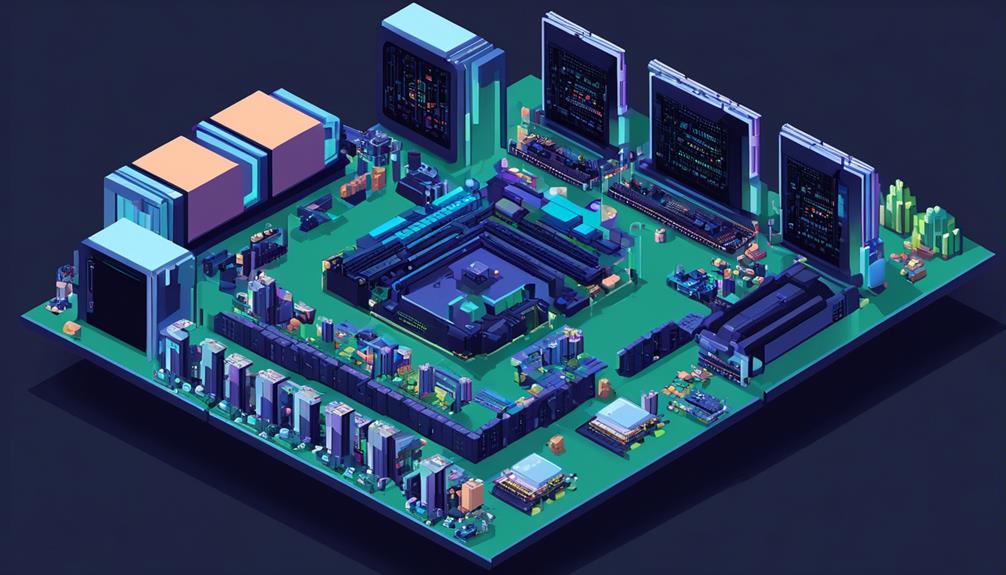
The importance of upgrading edge hardware lies in its ability to enhance performance, reduce latency, and enable advanced AI capabilities in edge computing applications. Upgrading edge hardware is crucial for organizations looking to optimize their edge computing systems and take advantage of the benefits it offers.
One of the key advantages of updating edge hardware is the improvement in performance it brings. With more powerful processors, increased memory, and faster storage, edge devices can handle complex computations and data processing tasks more efficiently.
Reducing latency is another significant reason for updating edge hardware. By upgrading to newer hardware, organizations can minimize the delay between data collection and analysis, ensuring real-time decision-making and faster response times. This is particularly important in time-sensitive applications such as autonomous vehicles, industrial automation, and smart cities.
Furthermore, updating edge hardware enables advanced AI capabilities. With the integration of powerful GPUs and specialized AI accelerators, edge devices can perform complex machine learning algorithms and deep neural network computations locally. This not only reduces the need for sending data to the cloud for processing but also enhances privacy and security by keeping sensitive data within the edge device.
Another crucial aspect of updating edge hardware is ensuring compatibility with the latest software and security updates. By keeping edge devices up-to-date, organizations can take advantage of new features, bug fixes, and security patches. This enhances the overall reliability and stability of edge computing systems, reducing the risk of vulnerabilities and ensuring smooth operations.
Current Technological Advancements in Edge Computing
Current technological advancements in edge computing are driving the latest trends and revolutionizing the way data is processed and served.
The impact of edge computing can be seen in various industries, from reducing latency and improving user experience to enabling AI-powered applications and enhancing machine learning capabilities.
With the availability of specialized chips and development tools like Nvidia Jetson, Particle devices, Google Coral chips, and Raspberry Pi, organizations have the flexibility to choose the hardware that best suits their edge computing needs and stay at the forefront of technological advancements in this rapidly evolving field.
Latest Edge Computing Trends
Edge computing is experiencing rapid advancements in technology, with real-time analytics, IoT growth, and the convergence of 5G and AI capabilities driving the latest trends in this field. These trends are shaping the future of edge computing and enabling a wide range of applications.
- Nvidia Jetson chips: These chips offer AI-powered vision and easier development for edge-computing tasks, allowing for efficient processing and analysis of data at the edge.
- Google Coral devices: Equipped with custom tensor-processing units (TPUs), these devices enable efficient solutions for machine learning at the edge, empowering edge AI applications.
- Open source projects: Open source projects provide developers with the tools and resources needed to simplify the development and updating of edge and embedded systems, making edge computing more accessible.
- Luos bootloader: Luos bootloader is a lightweight framework that simplifies the integration of different hardware components in edge systems, enhancing interoperability and flexibility.
These latest trends in edge computing are driving innovation and expanding the possibilities for Edge AI applications across various industries. With significant growth projected in edge computing spending, it is clear that this field will continue to evolve and revolutionize the way we process and analyze data.
Impact of Edge Computing
With the rapid advancements in technology, edge computing is revolutionizing the way data is processed and analyzed, bringing processing closer to users and improving user experience by reducing latency and cost.
The impact of edge computing is significant in various areas. Firstly, edge computing enables faster response times by processing data locally instead of sending it to a centralized cloud server. This is particularly crucial for time-sensitive applications such as autonomous vehicles and real-time monitoring systems.
Secondly, edge computing reduces the amount of data that needs to be transmitted over the network, resulting in lower bandwidth requirements and reduced costs. Additionally, edge computing enhances data privacy and security by keeping sensitive data closer to the source and minimizing the risk of data breaches during transmission.
Finally, edge computing allows for offline functionality, ensuring continuous operations even in scenarios where network connectivity is limited or intermittent.
Factors to Consider Before Upgrading Hardware
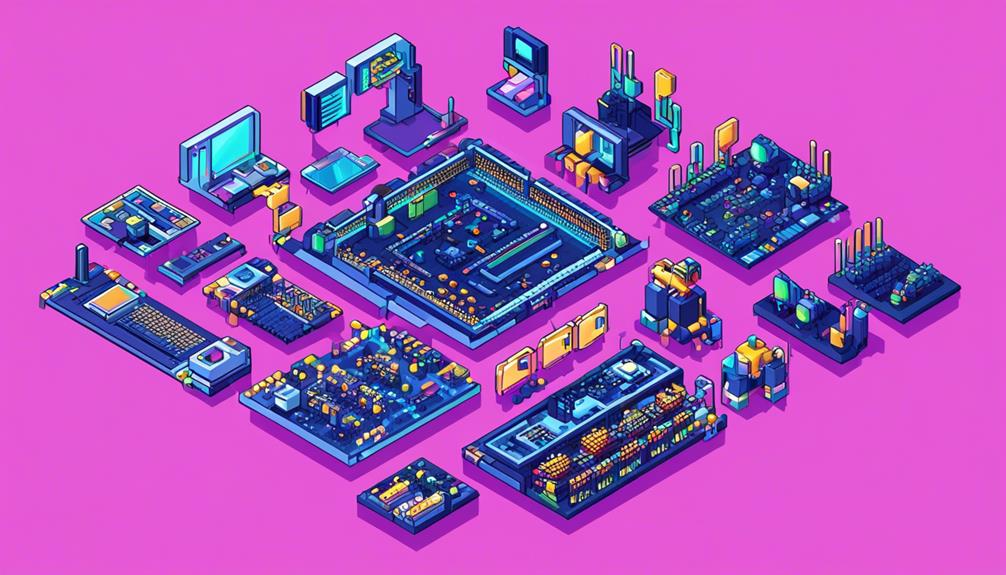
Before upgrading hardware for edge computing, it is imperative to carefully consider various factors to ensure seamless integration and optimal performance. Here are some key factors to consider:
- Specific Needs and Requirements: Evaluate the specific needs and requirements of your edge computing applications. Consider factors such as processing power, memory capacity, and storage requirements to determine the hardware upgrades needed to support your workload effectively.
- Scalability and Future Growth: Assess the scalability and future growth potential of your edge computing infrastructure. Ensure that the upgraded hardware can accommodate the expanding workload without compromising performance. Consider factors such as the number of devices, data volume, and processing demands that may increase over time.
- Budget and Cost Implications: Analyze the budget and cost implications of upgrading hardware. Consider the upfront costs of purchasing new hardware and the potential return on investment. Evaluate whether the upgraded hardware aligns with your financial strategy and is a cost-effective solution in the long run.
- Technical Specifications and Compatibility: Analyze the technical specifications of the upgraded hardware and ensure compatibility with existing systems, software, and peripherals. This minimizes potential integration challenges and ensures a smooth transition. Consider factors such as operating systems, software dependencies, and connectivity requirements to avoid compatibility issues.
Considering these factors will help you make informed decisions when upgrading hardware for edge computing. By carefully evaluating your specific needs, scalability, budget, and compatibility, you can ensure that the upgraded hardware delivers the required computing power, seamless integration, and optimal performance for your edge computing applications.
Best Practices for Upgrading Edge Hardware
When upgrading edge hardware, it is crucial to consider hardware compatibility with existing infrastructure. Assessing compatibility ensures seamless integration and minimizes disruptions during the upgrade process.
Additionally, conducting a risk assessment and implementing mitigation measures is essential to identify potential issues and develop contingency plans.
Rigorous testing and validation procedures should be performed to ensure the upgraded edge hardware functions properly in production environments.
Hardware Compatibility Considerations
To ensure a smooth and successful upgrade of edge hardware, it is crucial to meticulously assess and confirm the compatibility of the new components, software, and firmware with the existing infrastructure. Here are some important hardware compatibility considerations to keep in mind:
- Research and consider the compatibility of the new hardware with existing infrastructure, including power supplies, connectivity options, and form factor.
- Evaluate the compatibility of the new hardware with any third-party peripherals or accessories that are currently in use or may be required for the upgraded system.
- Review the compatibility of the new hardware with the operating system and any specialized software or applications that are critical for edge computing tasks.
- Test the compatibility of the new hardware in a controlled environment before widespread deployment to identify and address any compatibility challenges early on.
Risk Assessment and Mitigation
Ensuring the smooth and secure upgrade of edge hardware requires a comprehensive risk assessment and mitigation strategy to address vulnerabilities and maintain system integrity.
Before upgrading edge computing hardware, it is essential to conduct a thorough risk assessment to identify potential weaknesses and vulnerabilities in the system. This assessment will help in developing a mitigation strategy that includes regular security updates, patches, and testing to address these vulnerabilities effectively.
Implementing a phased deployment approach for upgrading edge hardware can mitigate the risk of widespread system disruption and facilitate efficient troubleshooting.
It is also crucial to establish backup and recovery mechanisms to ensure data and system integrity in the event of hardware upgrade failures or unforeseen complications.
To minimize human errors and ensure a smooth transition, personnel should be trained and educated on best practices for upgrading edge hardware.
Implementation and Testing
The successful implementation and testing of upgraded edge hardware is crucial for ensuring compatibility, performance, and system integrity. To achieve this, several best practices can be followed:
- Testing the upgraded edge hardware in a controlled environment is essential to identify any compatibility issues and ensure optimal performance.
- Creating a rollback plan is important in case the upgrade encounters unforeseen issues, allowing for a smooth transition back to the previous hardware.
- Conducting performance testing under different workloads helps assess the impact of the upgrade on edge computing tasks and enables optimization if needed.
- Implementing a phased deployment approach minimizes disruptions and allows for early identification of any issues that may arise during the implementation process.
Benefits of Upgrading Edge Computing Hardware
Upgrading edge computing hardware significantly enhances processing power and performance, enabling faster and more efficient operations in edge environments. The benefits of using upgraded hardware extend beyond simple performance improvements. With improved hardware, edge devices gain the capability to handle complex AI and machine learning tasks, further enhancing their capabilities. This allows for better decision-making and analysis at the edge, reducing the need for data transfer to centralized cloud servers.
One of the key benefits of upgrading edge computing hardware is reduced latency. By processing data closer to the source, edge devices can provide real-time responses and insights. This is particularly important for applications such as autonomous vehicles, industrial automation, and remote asset monitoring, where timely decision-making is critical.
Additionally, upgrading hardware improves the reliability of edge computing applications. More advanced hardware components are designed to withstand harsh environments and are better equipped to handle the demands of continuous operation. This translates into improved uptime and reduced maintenance costs.
Another advantage is the cost-effectiveness of using upgraded edge computing hardware. By processing data locally, organizations can reduce the amount of data that needs to be transferred to the cloud, minimizing bandwidth and storage costs. Moreover, edge devices can perform data filtering and aggregation, sending only relevant information to the cloud for further analysis, thereby optimizing resource utilization.
Furthermore, enhanced hardware enables the deployment of more advanced and innovative edge computing use cases and applications. With increased processing power, edge devices can handle more complex workloads and support emerging technologies such as augmented reality, virtual reality, and advanced analytics.
Recommended Hardware Devices for Edge Computing
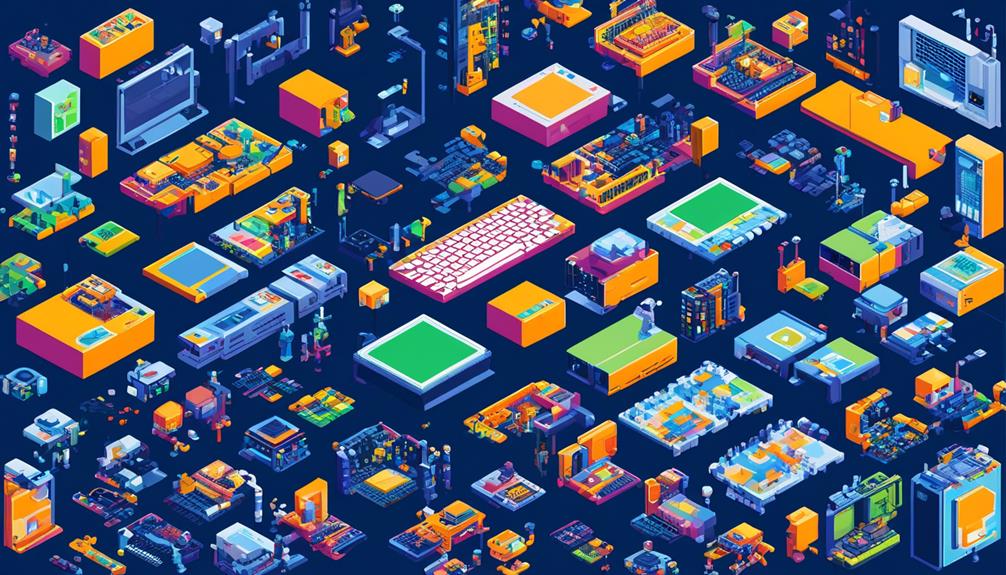
To optimize edge computing systems, selecting the appropriate hardware devices is crucial for achieving efficient and reliable performance. There are several recommended hardware devices for edge computing that offer different features and capabilities. These devices include:
- Nvidia Jetson chips: Designed specifically for edge-computing tasks with AI capabilities, Nvidia Jetson chips enable AI-powered vision in robotic arms and cameras. They provide high-performance computing power and are optimized for machine learning applications.
- Particle devices: Suitable for edge or IoT projects, Particle devices offer globally available SIM cards for transmitting data using cellular networks. They provide reliable connectivity and are ideal for applications that require remote monitoring and control.
- Google Coral chips: Google Coral chips are ideal for machine learning projects at the edge. They are powered by custom tensor-processing units specialized for machine learning, offering accelerated inference capabilities. Google Coral chips provide both prototyping and production-ready devices, making it easier to scale edge computing solutions.
- Raspberry Pi: Raspberry Pi is a popular choice for IoT and edge computing projects. It offers usability and flexibility for a wide range of applications. With its low-cost and small form factor, Raspberry Pi devices are suitable for prototyping and deploying edge computing solutions. Additionally, Raspberry Pi has a supportive ecosystem and community, providing ample resources and support for developers.
These hardware devices provide different capabilities and features, allowing developers to choose the most suitable option based on their specific requirements. Whether it is high-performance AI computing, reliable connectivity, accelerated machine learning, or flexibility and affordability, these recommended hardware devices offer a range of options for edge computing projects.
Nvidia Jetson – A Powerful Edge Computing Device
Nvidia Jetson is a high-performance edge computing device designed specifically for AI tasks.
With its powerful processing capabilities, Jetson enables developers to implement AI-powered vision in various applications such as robotic arms and cameras.
It offers a unified development stack and comes with software tools and development kits, making it easier for developers to create and deploy edge computing projects with AI capabilities.
Power of Nvidia Jetson
The Nvidia Jetson is a highly powerful edge computing device that is specifically designed for AI-powered vision applications in fields such as robotics and surveillance. With its advanced capabilities, the Jetson chips enable seamless integration of artificial intelligence into various edge computing tasks.
Here are some key features and benefits of the NVIDIA Jetson:
- Designed for edge-computing tasks: The Jetson chips are purpose-built for running AI workloads at the edge, ensuring low latency and real-time processing.
- AI-powered vision: Equipped with powerful GPUs and AI capabilities, the Jetson hardware enables high-performance vision applications, making it ideal for robotic arms and cameras.
- Software tools and development kits: NVIDIA provides a comprehensive set of software tools and development kits that facilitate easier development and optimization of AI applications on the Jetson platform.
- Prototype to commercialization: Whether you are a developer creating a prototype or a business looking to commercialize edge computing solutions, Jetson chips are available for both stages, allowing for scalability and flexibility in deployment.
The NVIDIA Jetson offers a unified development stack that empowers developers and businesses to unlock the full potential of edge computing.
Edge Computing Capabilities
With its robust AI capabilities and purpose-built design for edge-computing tasks, the Nvidia Jetson stands as a powerful and versatile device for unlocking the full potential of edge computing.
The hardware enables AI-powered vision in robotic arms and cameras, making it suitable for a wide range of projects. Nvidia provides software tools and development kits, simplifying the development process for edge computing projects.
Whether for prototypes or commercialization, Jetson chips are available for both individual and bulk purchases, offering flexibility for different project needs.
Jetson offers a unified development stack, providing a comprehensive solution for edge computing projects. Its edge computing capabilities empower developers to deploy AI models directly on the device, enabling real-time decision-making and reducing the need for cloud connectivity.
The Jetson's powerful processing capabilities and efficient power consumption make it an ideal choice for edge computing applications.
Benefits for Developers
Developers can leverage the powerful AI capabilities of the Nvidia Jetson, an advanced edge computing device, to unlock a multitude of innovative and cutting-edge applications.
The benefits for developers using the Nvidia Jetson in software development include:
- Simplified and expedited development process: Jetson's hardware and software tools, along with development kits, simplify and expedite the creation of edge computing applications. This reduces time and effort for developers.
- Unified development stack: Nvidia Jetson offers a unified development stack, providing a seamless and integrated platform for developers to work on edge computing projects. This streamlines the development workflow.
- Flexibility and scalability: The availability of Jetson chips for both prototypes and bulk purchases makes it a flexible and scalable solution for developers, catering to various project scales and requirements.
- AI-powered vision capabilities: Jetson's AI-powered vision capabilities empower developers to create sophisticated applications, such as robotic arms and cameras. This enhances the potential for cutting-edge edge computing solutions.
Particle – Enhancing Edge Computing Capabilities
Particle revolutionizes edge computing capabilities by providing enhanced solutions for IoT projects that do not have access to WiFi or ethernet options. With its globally available SIM cards, Particle enables efficient data transmission using cellular networks, making it an ideal choice for edge computing applications in remote or mobile environments. By leveraging cellular connectivity, Particle ensures that IoT devices can securely transmit data in real-time, enabling seamless integration with edge computing systems.
Particle's IoT cloud platform further simplifies the integration of different systems for edge computing projects. It offers extensive APIs, SDKs, and third-party tool integrations, enabling developers to streamline the development process and accelerate time-to-market. The platform provides a unified interface for managing and monitoring edge devices, allowing for easy scalability and remote management.
One of the key advantages of Particle is its ease of use. It simplifies the process of building edge or IoT projects, allowing developers to focus on the core functionalities rather than dealing with complex networking configurations. Particle's hardware modules come with built-in features and pre-installed firmware, reducing the time and effort required for setup and deployment.
Moreover, Particle's edge computing capabilities extend beyond data transmission and management. It supports edge analytics and machine learning, enabling real-time processing and decision-making at the edge. This empowers IoT devices to perform complex tasks locally, reducing latency and dependency on cloud resources.
Google Coral – Optimizing Edge Computing Performance
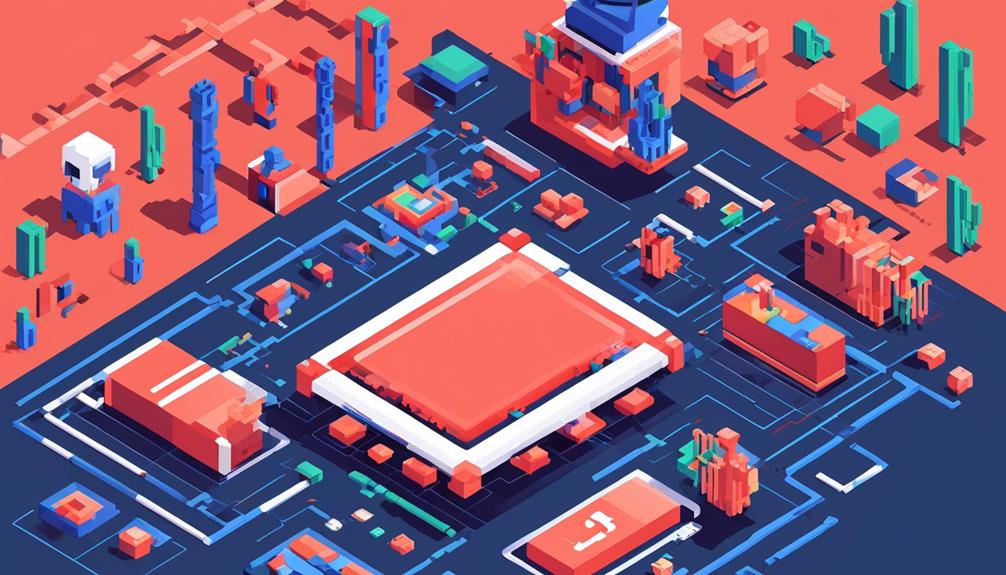
Google Coral chips are designed to optimize edge computing performance for machine learning projects, providing efficient solutions for edge computing. These devices are powered by custom tensor-processing units (TPUs) specialized for machine learning, allowing for enhanced processing capabilities at the edge.
Here are some key features and benefits of Google Coral for optimizing edge computing performance:
- Custom TPUs: Google Coral utilizes custom TPUs that are specifically designed to accelerate machine learning workloads. These TPUs provide high-performance processing capabilities, enabling real-time inference and analysis of machine learning models at the edge.
- Prototyping and production-ready devices: Coral offers both prototyping and production-ready devices, providing flexibility for developers to build and scale their machine learning projects. This allows for easy integration of Coral into various applications and environments.
- Coral USB accelerator: The Coral USB accelerator is a compact and portable device that can be plugged into other devices, such as laptops or single-board computers. It enhances the performance of these devices by offloading machine learning workloads to the Coral TPU, enabling efficient and optimized edge computing.
- Ideal for edge computing applications: Google Coral is specifically designed for projects that require machine learning capabilities at the edge. With its optimized hardware and powerful TPUs, Coral can handle complex machine learning tasks locally, reducing latency and improving privacy by keeping data on the edge devices.
Raspberry Pi – Affordable and Versatile Edge Device
Raspberry Pi, an affordable and versatile edge computing device, offers a wide range of capabilities for IoT and edge computing projects. With the Raspberry Pi ecosystem, users benefit from a supportive community, extensive documentation, and a plethora of guides, tutorials, libraries, and third-party hardware options.
Despite the current chip shortages impacting the tech industry, Raspberry Pi aims to resolve this issue in the second half of 2023, ensuring continued availability for edge computing projects.
One of the key advantages of Raspberry Pi is its beginner-friendly nature, making it accessible to users with varying levels of technical expertise. Its flexibility and usability make it an ideal choice for a wide range of edge computing applications. Whether it's running data processing algorithms, hosting machine learning models, or serving as a gateway device for IoT networks, Raspberry Pi can handle these tasks efficiently.
The Raspberry Pi community provides a wealth of resources to support users. Its extensive documentation covers everything from basic setup to advanced topics, enabling users to quickly get started and troubleshoot any issues they may encounter. Additionally, the availability of guides, tutorials, libraries, and third-party hardware further enhances the versatility of Raspberry Pi, allowing users to customize their edge computing solutions to suit their specific needs.
The affordability of Raspberry Pi is another aspect that makes it an attractive choice for edge computing projects. The low-cost nature of the device, combined with its robust capabilities, enables cost-effective deployment of edge computing solutions. This affordability makes it accessible to a wide range of individuals and organizations, including hobbyists, researchers, and industrial users.
Orange Pi – Reliable Edge Computing Solution
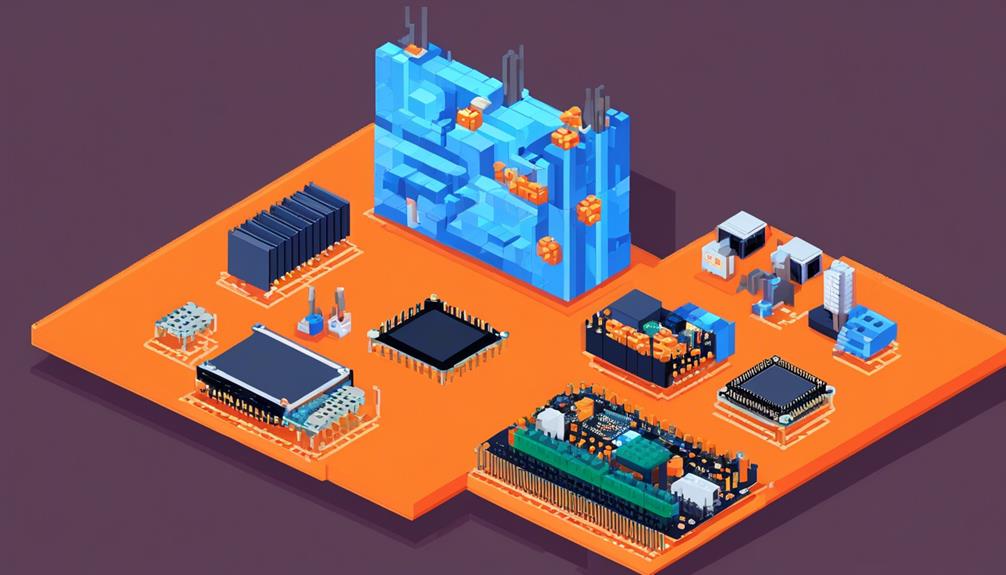
Orange Pi is a reliable and cost-effective edge computing solution that offers improved hardware performance compared to other alternatives. With similar or lower prices compared to Raspberry Pi, Orange Pi devices provide a viable option for edge computing projects.
Here are some key facts about Orange Pi:
- Improved hardware performance: Orange Pi devices offer better hardware performance compared to Raspberry Pi, making them suitable for demanding edge computing tasks. This enhanced performance ensures efficient processing and analysis of data at the edge, enabling real-time decision-making.
- Compatibility with Raspberry Pi peripherals: Despite having a smaller community and ecosystem, Orange Pi can be compatible with Raspberry Pi peripherals. This compatibility allows users to leverage the existing accessories and peripherals available for Raspberry Pi, reducing the overall cost and increasing the flexibility of edge computing projects.
- Cost-effective options for edge computing: Certain Orange Pi models are specifically designed to work well with Raspberry Pi peripherals, providing cost-effective options for edge computing projects. These models offer a balance between affordability and performance, making them a suitable choice for organizations with budget constraints.
- Reliable solution for edge computing: Orange Pi presents a reliable edge computing solution with improved hardware performance. This reliability ensures consistent operation and minimal downtime, crucial for edge computing applications where real-time processing and analysis are critical.
Odroid – High-performance Edge Computing Device
Odroid is a high-performance edge computing device that offers a range of features and specifications for edge computing projects.
With options for additional processing power and configuration, Odroid provides flexibility and customization options.
Some Odroid models also allow for the addition of external RAM, enhancing their capabilities.
When compared to Raspberry Pis, Odroids may require more technical expertise for setup and working with peripherals.
Odroid Features and Specifications
With their high-performance capabilities and extensive configuration options, Odroid single-board computers have emerged as a leading choice for edge computing projects. These devices offer additional processing power and customization options compared to Raspberry Pis, making them suitable for demanding edge computing tasks.
The following features and specifications further enhance their edge computing capabilities:
- External RAM Expansion: Certain Odroid models allow for the addition of external RAM, providing flexibility and customization options for edge computing tasks that require more memory.
- Technical Expertise: Working with Odroids may require more technical expertise compared to Raspberry Pis, as they offer advanced features and options that require a deeper understanding of hardware and software configurations.
- Enhanced Hardware Performance: Odroid single-board computers provide enhanced hardware performance, enabling faster data processing and analysis at the edge.
- Customization Options: Odroids offer extensive configuration options, allowing users to tailor the hardware setup to their specific edge computing requirements.
These features make Odroid single-board computers ideal for edge computing projects that demand high-performance and customization.
Benefits of Using Odroid
The utilization of the Odroid single-board computer as a high-performance edge computing device presents numerous benefits.
Compared to Raspberry Pis, Odroid devices offer additional options for processing power and configuration, making them suitable for a wide range of edge computing tasks. Certain Odroid models even allow for the addition of external RAM, further enhancing their capabilities.
While setting up and using peripherals with Odroids may require more technical expertise compared to Raspberry Pis, they provide flexibility and customization options for embedded systems.
With their range of processing power and configuration options, Odroid devices are well-suited for edge computing projects.
Intel NUC – Compact and Efficient Edge Device
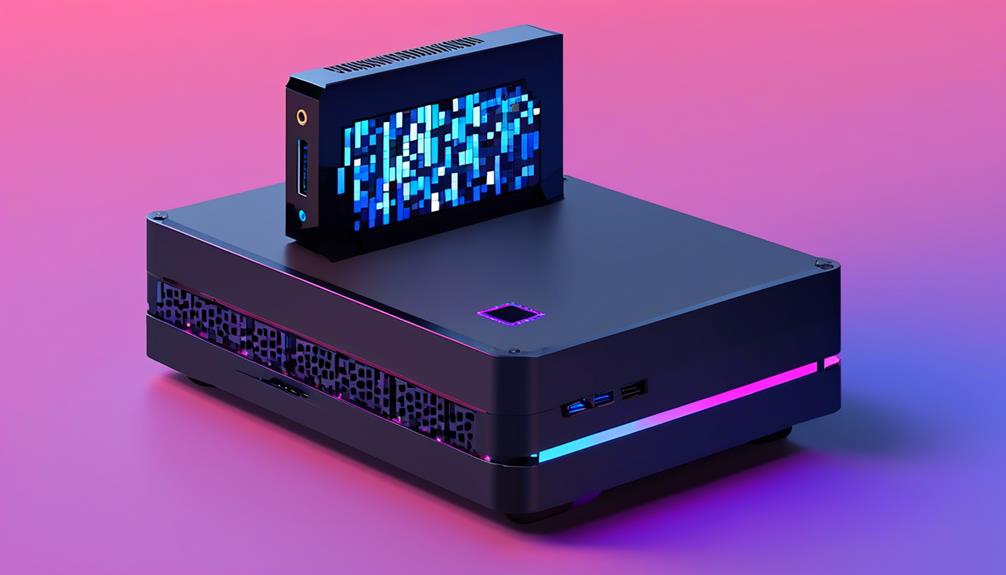
Intel NUC, a compact and efficient edge device, is a versatile solution for various edge computing needs, providing powerful processing capabilities in a small form factor. This device is well-suited for space-constrained environments where a compact yet powerful computing solution is required. The Intel NUC supports various connectivity options, including Wi-Fi and Ethernet, allowing for seamless integration into edge computing networks. Its robust hardware design ensures reliable and consistent performance for edge computing applications.
Key features and benefits of the Intel NUC include:
- Compact Form Factor: The Intel NUC's small size makes it easy to deploy in tight spaces, such as edge computing nodes or remote locations.
- Powerful Processing: Despite its size, the Intel NUC offers powerful processing capabilities, enabling it to handle demanding edge computing workloads efficiently.
- Connectivity Options: With support for Wi-Fi and Ethernet, the Intel NUC can easily connect to existing networks, ensuring seamless integration into edge computing environments.
- Versatility: The Intel NUC is suitable for various edge computing applications, including edge AI, real-time analytics, and IoT deployments. It provides versatile solutions for diverse edge computing needs.
The Importance of Regular Maintenance and Updates
Regular maintenance and updates are essential for maintaining the security, stability, and optimal performance of edge computing hardware. By regularly updating the hardware and software, organizations can ensure that their edge devices are protected against the latest security threats and vulnerabilities. Continuous updates help in patching vulnerabilities and improving the overall performance of edge computing devices.
Regular maintenance and updates also ensure compatibility with the latest software and technologies, preventing obsolescence. This is particularly important in the rapidly evolving field of edge computing, where new technologies and standards are constantly emerging. By keeping the hardware and software up to date, organizations can take advantage of the latest advancements and ensure that their edge computing infrastructure remains competitive.
Implementing regular maintenance and updates also reduces the risk of system failures and downtime in edge computing environments. By proactively identifying and addressing any issues or potential bottlenecks, organizations can prevent costly disruptions to their operations. This is especially critical in edge computing, where the availability and responsiveness of the infrastructure are paramount.
Furthermore, up-to-date hardware and software through regular maintenance and updates contribute to the longevity and reliability of edge computing infrastructure. By regularly monitoring and optimizing the performance of edge devices, organizations can extend their lifespan and minimize the need for costly hardware replacements.
To illustrate the importance of regular maintenance and updates, consider the following table:
| Benefits of Regular Maintenance and Updates |
|---|
| Enhanced security |
| Improved performance |
| Compatibility with latest technologies |
| Reduced risk of system failures |
Future Trends in Edge Computing Hardware
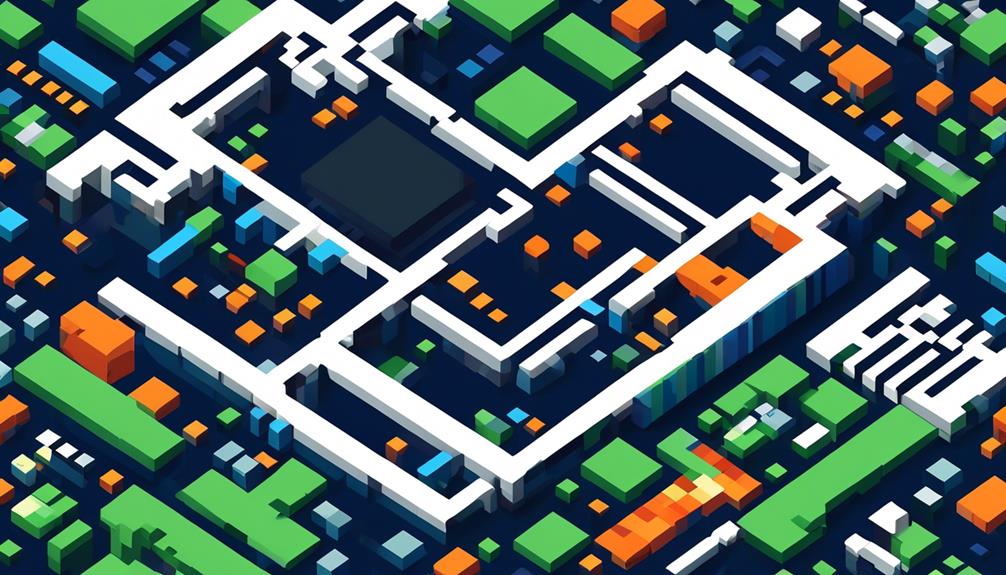
Edge computing hardware is poised for significant advancements in the near future, with the integration of AI capabilities and the convergence of 5G networks opening up new possibilities for real-time decision-making and enhanced efficiency.
- AI integration: The integration of artificial intelligence (AI) capabilities into edge computing hardware is a major future trend. AI algorithms can be deployed at the edge, enabling real-time decision-making and reducing the need for data to be sent to centralized cloud servers for processing. This not only improves response times but also enhances privacy and security by keeping sensitive data local.
- Convergence of 5G and edge computing: The convergence of 5G networks and edge computing is another key trend. 5G networks provide high bandwidth and low latency, allowing edge devices to communicate with each other and centralized systems faster than ever before. This convergence enables innovative use cases such as autonomous vehicles, smart cities, and industrial automation, where real-time data processing and analysis are crucial.
- Advancements in edge computing power: The continuous advancements in edge computing power are also shaping the future of edge computing hardware. For example, Apple's M3 chips offer faster data processing and analysis capabilities, enabling edge devices to handle more complex tasks efficiently. These advancements allow edge computing devices to perform sophisticated computations without relying heavily on cloud servers, improving overall system performance.
- 6G networks: Looking further into the future, the advent of 6G networks is expected to further reduce latency and offer even faster data transfer rates. This will unlock new possibilities for edge computing, enabling real-time applications that require instantaneous decision-making. With 6G networks, edge computing can support critical applications such as remote surgery, augmented reality, and advanced robotics.
Frequently Asked Questions
What Hardware Is Used in Edge Computing?
Edge computing hardware refers to the physical components used in edge computing systems. These systems aim to bring computing power closer to the data source, reducing latency and improving performance.
Hardware advancements in edge computing include edge devices like Nvidia Jetson chips, Particle devices, Google Coral chips, Raspberry Pi, and Orange Pi. These devices are designed for various edge computing applications, including IoT projects, machine learning tasks, autonomous vehicles, healthcare, and smart cities.
The choice of hardware depends on the specific requirements of the edge computing architecture and the desired output.
What Is Enhanced Edge Computing?
Enhanced edge computing is a cutting-edge technology that optimizes the processing and distribution of data closer to its source, resulting in improved efficiency, reduced latency, and faster response times.
By integrating advanced hardware and software capabilities, enhanced edge computing enables real-time analytics and decision-making at the edge, leading to enhanced user experiences and operational efficiency.
This technology also facilitates the integration of AI capabilities at the edge, allowing for more sophisticated processing and analysis of data.
Moreover, enhanced edge computing plays a crucial role in the growth and advancement of IoT and 5G technologies by providing robust and efficient processing capabilities.
Does Edge Computing Have a Future?
The Edge Computing Revolution is poised to reshape industries by enabling real-time analytics, reducing latency, and supporting the growth of IoT.
With the convergence of edge computing and 5G networks, new possibilities are emerging, and innovative use cases are being developed.
Edge computing's future is bright as it addresses the increasing demand for processing and analyzing data from connected devices efficiently. It facilitates the movement of AI capabilities to the edge, leveraging higher computing power and reducing costs and latency.
What Are the Disadvantages of Edge Computing?
Disadvantages of edge computing include challenges and limitations.
The distributed nature of edge computing introduces infrastructure challenges, making it difficult to manage assets across multiple locations.
Powering and cooling edge equipment in public spaces can be a challenge, raising concerns about security and the pace of edge deployments.
Additionally, the increased targeting of edge deployments by hackers and the potential for cyber attacks on edge computing devices are significant disadvantages.
Full deployment of 5G networks is necessary to fully leverage the capabilities of edge computing.
